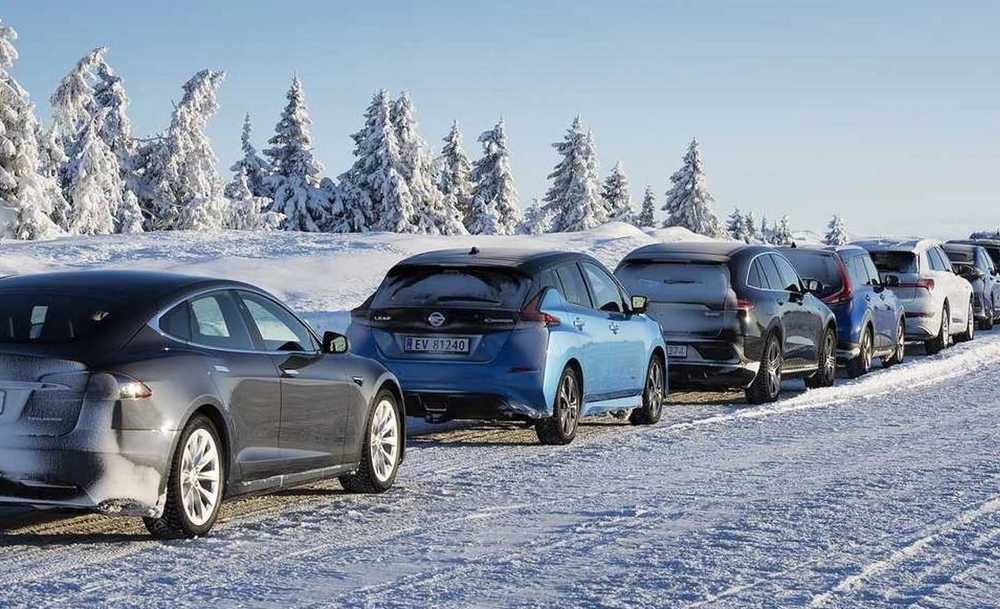Published
- 4 min read
Tips for maximizing efficiency in electric cars during cold weather

As winter approaches, many electric vehicle (EV) owners wonder how cold weather will impact their vehicle’s performance. While electric cars are designed to operate efficiently year-round, colder temperatures can reduce battery range and affect heating capabilities. Understanding how to optimize your EV’s performance in cold weather can make all the difference in maintaining efficiency and comfort.
Cold temperatures primarily affect electric vehicles because of how lithium-ion batteries operate. When the temperature drops, these batteries are less efficient in storing and delivering power, resulting in reduced range. For example, in sub-freezing conditions, you might experience a noticeable drop in your vehicle’s range, sometimes by as much as 20-30%. This range loss is due to both the chemical processes in the battery slowing down and the increased energy required to heat the car’s cabin. Unlike air conditioning, which minimally affects the battery, heating can significantly impact energy consumption, especially during long trips or extended periods of idling.
Preconditioning: a smart way to preserve range
A simple but effective solution for managing cold weather effects on your EV is preconditioning. This feature allows you to warm up the cabin and the battery while your car is still plugged into the charger. This ensures that the energy used for heating comes from the grid rather than from the car’s battery, conserving power for driving.
Many modern EVs allow you to control preconditioning through a mobile app. You can set a departure time so that your car is fully warmed and ready when you’re set to leave. This is especially beneficial for early morning commutes when your car has been sitting in freezing temperatures overnight. By preconditioning your EV, you can significantly reduce the range loss that would typically occur when starting a cold vehicle.
Preconditioning doesn’t just save energy for driving; it also improves your car’s comfort. Walking into a warm cabin during the winter months is one of the more enjoyable benefits of owning an EV with preconditioning capabilities.
Heat pumps: maximizing energy efficiency in the cold
Another critical feature for maintaining efficiency in cold weather is the heat pump, which is much more energy-efficient than traditional cabin heaters. A heat pump works by drawing warmth from the outside air, even when temperatures are low, and using it to heat the cabin. This method is significantly less power-hungry than conventional electric heaters, which rely on resistive heating elements that consume more energy.
By utilizing a heat pump, you can extend your driving range without sacrificing comfort. Heat pumps are becoming a standard feature in many new electric vehicles due to their efficiency. They provide a steady supply of warm air while using far less energy than older heating technologies, making them ideal for cold-weather conditions.
In particularly frigid climates, a heat pump can make a noticeable difference in maintaining your car’s range, especially on longer trips. If your EV is equipped with a heat pump, it’s one of the best tools for preserving battery life in winter.
Additional tips: heated seats and traction control
Using heated seats and a heated steering wheel can also help you stay warm without using as much energy as cabin heating. Human physiology responds quickly to direct warmth, meaning if your hands and body are warm, you’ll feel comfortable even if the cabin temperature is slightly lower. This strategy allows you to reduce overall cabin heating, saving energy and preserving battery life.
In terms of winter driving safety, electric vehicles often come equipped with features like all-wheel drive (AWD), traction control, and snow-driving modes. These features ensure your vehicle can handle icy or snow-covered roads with ease. EVs generally perform as well as or even better than gas-powered cars when it comes to traction and stability in winter conditions.
One common concern for EV drivers is whether their vehicle can keep them warm for extended periods, such as during a snowstorm or traffic jam. Tests have shown that, even in freezing conditions, electric cars can keep the cabin warm for a surprisingly long time. In some cases, an EV can maintain warmth for nearly two days on a full charge, making them reliable for winter emergencies.
By combining these cold-weather strategies—preconditioning, using a heat pump, and relying on heated seats and steering wheels—you can maintain your EV’s range and stay comfortable throughout the winter. Understanding how to make the most of your EV’s features will help you overcome the challenges of driving in cold weather and ensure a smooth and efficient experience, no matter how low the temperature drops.

Douglas K. Richey is a freelance writer and editor with over 15 years of experience in the automotive industry. He has worked as a writer, editor, and content manager for a variety of publications.